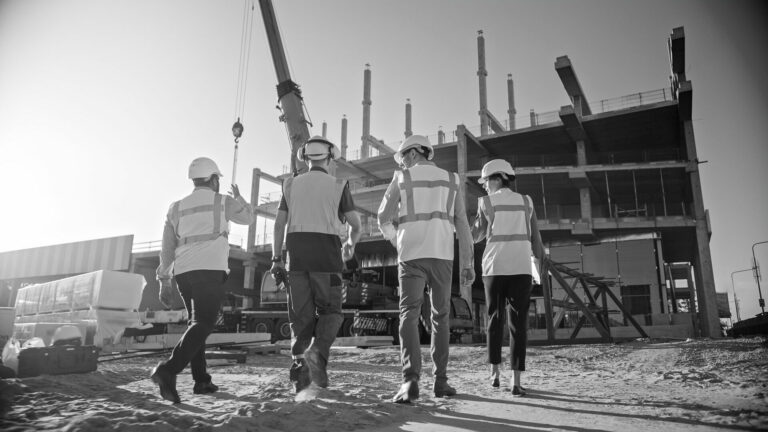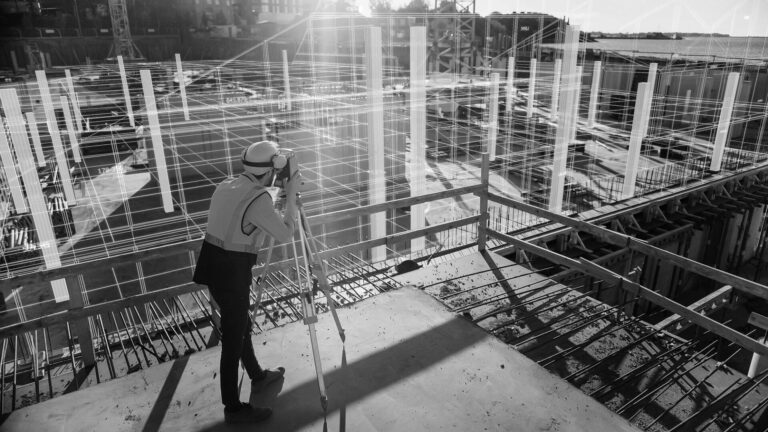For the past year, forecasters have been predicting a downturn in the construction sector. Throughout this period, the prospect of a recession has loomed over the industry and it seems that a combination of challenging factors such as supply concerns and skilled worker shortages have created ripples of anxiety to spread in some quarters. However, the difficulty with accepting the viewpoints of small industry cohorts is that it is rarely representative of the industry as a whole. These challenges certainly exist, nobody is claiming otherwise. However, the construction industry in North America is not quite on the precipice of meltdown just yet. In fact, it is far from it. While it may seem like an exaggeration to some, the North American construction industry is booming at a level that has never been seen before. According to expert data analysis, the market is estimated to grow at an annual rate of 3.3% between now and 2027. This is, in part, due to an increase in spending from both the private and public sectors in the areas of energy and infrastructure. Furthermore, data suggests that the industry market size is expected to reach an incredible $1,772.5 billion this year. So, with these figures allaying the fears of some within the industry, the question now is; where do we go from here?
Interestingly, the answer is… backwards. As the industry prepares to meet the demands of increased funding and projects, there is a genuine need to increase the workforce. Recent analysis from Associated Builders and Contractors revealed that the industry will need to attract an additional 546,000 workers on top of the typical pace of hiring this year. When this is coupled with the inevitable depletion of a workforce where roughly a quarter of workers are over the age of 55, we can identify potential pitfalls to capitalizing on the success happening within the sector.
Within this context, it is no surprise to see that companies are looking as far back as grade school to educate and encourage young people to consider a future career in construction. The problem with this approach is that many children are guided towards the workforce by parents and caregivers. For many of these adults, the industry can be seen in negative terms and the end result is huge numbers of students being forced into third level education.

One way of challenging these perceptions, however, is by showing young people the reality of a jobsite and construction career for themselves. Riegler Blacktop, a third-generation asphalt contractor in in Florence, KY, has taken the unique approach of providing internships on a part-time basis to school students. This allows the young people to gain experience, earn money, and secure a job before they graduate. Mike Riegler, President at the company, believes that this route to discovering new entrants to the sector is mutually beneficial in that it gives students the opportunity to learn and develop skills across a variety of disciplines. “It gives you a sense of pride when you’re able to build something and turn around and see what you’ve done,” he added.
This initiative, while working for Riegler, is not doing enough for the industry as a whole, however. When statistics are broken down and analyzed, we can see that it is a generational problem. Build California is a workforce development initiative that is tasked with supplying the booming Californian construction market with the workforce that it requires. “We want to inspire, engage, and activate the next generation of California’s construction workforce. We do this by shaping positive perceptions of the construction industry, informing young people and their influencers about the real career opportunities in construction and connecting them to local training programs.”
“Gen Z is one of the most diverse generations to ever enter the workforce.”
The rationale for this initiative is simple. The research is demonstrating very clearly that certain demographics are simply unaware of the benefits to working in construction. “Only 9 percent of Generation Z is interested in a future in construction. So, where’s the disconnect? The construction industry has a perception problem and it’s up to us, the associations, professionals, and organizations that actually build our state, to change hearts and minds. We must redefine our industry. We must invest in our own legacy so that future generations aspire to be construction professionals.” The initiative showcases the diverse career and training pathways the construction industry has to offer by taking students through salaries, training avenues and prospective jobs.
This generational gap is echoed by John Trimble, CEO of C&S Companies in Syracuse. He believes that the reality is a stark one, and the time to educate young people is already here. “We have a generation gap and it’s going to be important to get some of the younger generations involved because it’s great to have it on paper but someone needs to build them,” he says. To assist with this, C&S works consistently with Syracuse Builders Exchange to demonstrate careers to local students on an annual basis. Most years, the career fairs are attended by over 600 students. Earl Hall, Executive Director of Syracuse Builders Exchange, adds, “This career is special in that you can be trained right away out of high school and get a career if you work hard. There is a significant labor shortage in the trades. Not only regionally but nationally. So, these students are coming into an industry at a time where there’s going to be unbelievable opportunities for them.”

For those across the industry, it is important to inform and educate. The benefits of this can be seen quickly and effectively. This is, however, a two-way street. It is vital that companies recognize the benefits that having a Gen Z (workers under the age of 24) workforce will bring. A recent study by AGC showed that having an inclusive and diverse workforce brings both financial and safety benefits. Diverse teams, it says, bring higher profits and safer jobsites. It is no surprise that construction companies are trying to attract new workers from this demographic. Matt Rosentreter, Talent Generation Manager at employee-owned construction leader Burns & McDonnell, believes that workers from this pool will bring huge rewards to the industry. “Gen Z is one of the most diverse generations to ever enter the workforce. Their unique perspectives and diverse skill sets will be critical to addressing the upcoming challenges facing the construction industry.”
In an effort to tap into this demographic, construction companies have been increasing their outreach to potential workers across career-finding platforms. Reports show that this increase is somewhere in the region of 46%. Incredibly, figures show that this has resulted in a considerable bounce-back effect. According to one online recruiter, there has been a 40% increase in applications to architecture, drafting, and construction management roles over the same time period. Further evidence of this positive development is that the education and training initiatives also seem to be having an impact. According to the most recent data coming from the industry, young professionals are starting to pivot from the tech sector in search of more stable careers. As tech giants Google and Amazon continue to lay off workers, graduates and professionals with top-tier technological skills are being attracted to careers in construction. Applications to tech roles in construction companies has increased by 84% in the past 12 months which is far in excess of the figures across all industries. Alongside the huge increase in infrastructure funding, the adaptation of jobsites to new technology is proving a big draw. These workers are finding that their skills can be put to good use in areas such as integrated project management software, 3D printing, and AI.
When we look across all metrics, the construction industry isn’t in a bad place. Most major markers of success are in place and massive projects are continuing to be greenlit on a daily basis. If the industry is to capitalize on this growth however, a shift to attracting young, skilled, workers is vital. By growing its use of technology, the construction industry can become an attractive proposition for Gen Z workers. For those already within the sector, it is important to recognize the benefits that these workers will bring. These workers, having technology as a native language, are the future of a growing and thriving industry.


















